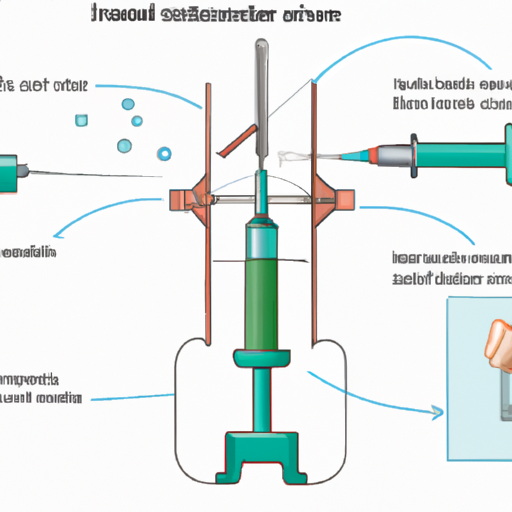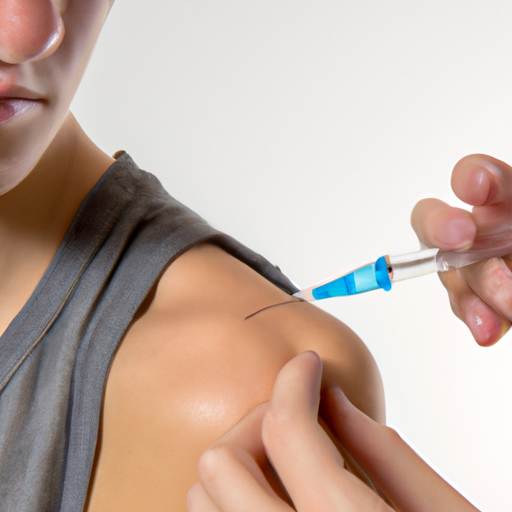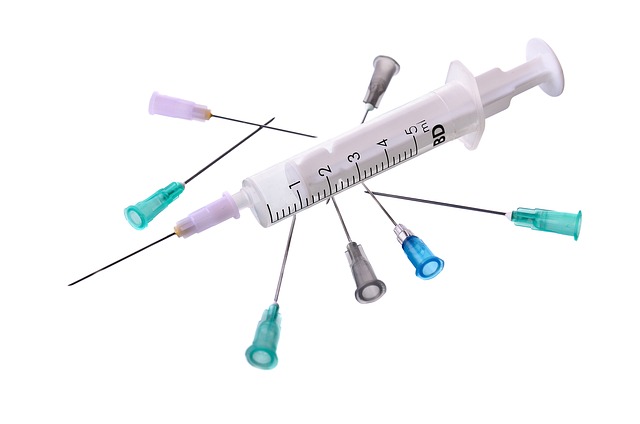This blog post explores the innovative field of Needle free injection, which offer a promising future for medical procedures. It sheds light on the technology behind these injections, the benefits they offer, and the potential challenges they face in the healthcare sector. It also discusses the applications of Needle free injection in various medical fields.
'The Revolution in Medical Science: How Needle free injection Work?'
Needle free injection have emerged as a revolutionary advancement in medical science, transforming the way medications and vaccines are administered. Unlike traditional injections that require a needle to penetrate the skin, Needle free injection employ innovative technologies to deliver medication through the skin without the use of needles.
One of the most common methods used in needle free injection is jet injection. This technique involves the use of high-pressure to create a fine stream of liquid medication that penetrates the skin at a high velocity. Another method is the use of micro-needles, which are tiny projections that painlessly puncture the skin to deliver medication directly into the underlying tissues. Additionally, there are devices that use gas propulsion to create a fine mist of medication that is absorbed through the skin.
These advances in needle-free injection technology offer several advantages. Firstly, they eliminate the fear and discomfort associated with needles, making the injection process less intimidating for patients of all ages. Furthermore, Needle free injection reduce the risk of needlestick injuries and the transmission of bloodborne diseases for healthcare professionals. Additionally, these injections provide more precise and consistent dosing, minimizing the potential for human error.
However, despite the numerous benefits, there are also challenges associated with Needle free injection. The cost of these devices can be higher compared to traditional needles and syringes, making them less accessible in certain healthcare settings. Moreover, some medications may not be suitable for needle-free administration due to their composition or stability requirements. Therefore, further research and development are needed to expand the range of medications that can be delivered through Needle free injection.

An illustrative diagram showing the working mechanism of a needle-free injection.
'The Pros and Cons: What Are the Benefits and Challenges?'
Benefits of Needle free injection:
- 1. Improved Patient Experience:
One of the primary benefits of Needle free injection is the enhanced patient experience. The fear and anxiety associated with needles can be a major deterrent for many individuals, especially children and those with needle phobias. Needle free injection offer a painless and less intimidating alternative, resulting in improved patient comfort and compliance. - 2. Reduced Risk of Infections:
Needlestick injuries pose a significant risk to healthcare professionals, exposing them to potential infections and bloodborne diseases. By eliminating the need for needles, Needle free injection help reduce the risk of accidental needlestick injuries, ensuring a safer working environment for healthcare providers. - 3. Enhanced Dosing Accuracy:
Traditional injections may be subject to human error, leading to inconsistent dosing. Needle-free injection devices are designed to provide more precise and consistent dosing, minimizing the potential for dosage errors. This accuracy is particularly crucial in critical care scenarios and when administering medications with narrow therapeutic ranges. - Challenges of Needle free injection:
- 1. Cost:
One of the challenges associated with Needle free injection is the cost. The technology and devices required for Needle free injection can be more expensive compared to traditional needles and syringes. This cost factor can limit the accessibility and adoption of needle-free injection methods, particularly in resource-constrained healthcare settings. - 2. Medication Compatibility:
Not all medications are suitable for needle-free administration. Some medications may have specific composition or stability requirements that make them unsuitable for delivery through needle-free injection devices. This limitation poses a challenge in expanding the range of medications that can be administered using needle-free techniques. - 3. Training and Skill Requirements:
While Needle free injection may be easier and less intimidating for patients, healthcare professionals need proper training and skill development to effectively use these devices. The use of different technologies and techniques requires healthcare providers to be proficient in selecting the appropriate device, administering the injection accurately, and managing potential complications.
'Does Needle-free Technology Translate to Pain-free Injections?'
The introduction of needle-free technology has sparked excitement about the possibility of pain-free injections. However, it is important to understand that not all Needle free injection guarantee a completely painless experience. While Needle free injection eliminate the use of traditional needles, they still involve the penetration of the skin to deliver medication.
The level of pain experienced during a needle-free injection can vary depending on factors such as the individual's pain tolerance, the specific device used, and the medication being administered. Some needle-free injection devices use a high-pressure jet to deliver the medication, which may cause a brief stinging sensation or discomfort upon contact with the skin. However, this discomfort is generally minimal and short-lived.
One advantage of Needle free injection is that they often allow for the delivery of medication at a faster rate compared to traditional needles. This means that the overall duration of discomfort during the injection process is typically shorter. Additionally, the elimination of needles can reduce the fear and anxiety associated with injections, which can contribute to a more positive overall experience for the patient.
It is worth noting that researchers and medical device manufacturers are continuously working to improve the technology and minimize any discomfort associated with Needle free injection. Advances in technology may lead to the development of more pain-free options in the future. In the meantime, healthcare professionals can play a crucial role in managing patient expectations and providing support during the injection process to help minimize any discomfort.

An image of a patient receiving a needle-free injection, with a focus on their reaction.
'A Look into the Future: What Does it Hold for Needle free injection?'
Advancements in medical technology have brought us Needle free injection, revolutionizing the way medication is administered. As we look ahead, it is fascinating to explore the potential future developments and possibilities that lie in store for Needle free injection.
- 1. Enhanced Delivery Systems:
Researchers and engineers are constantly working on innovative delivery systems that can further improve the efficiency and effectiveness of Needle free injection. This includes the development of micro-needles, which are tiny, painless projections that can penetrate the skin and deliver medication at a controlled rate. These micro-needles may be incorporated into wearable patches or devices, offering a convenient and pain-free method of medication administration. - 2. Expansion of Applications:
Currently, Needle free injection are primarily used for vaccines and some medications. However, the future holds the potential for expanding the range of applications. Research is being conducted to explore the feasibility of using Needle free injection for insulin delivery, hormone therapies, and even gene therapies. This could revolutionize the treatment options available for various medical conditions, providing patients with more convenient and comfortable alternatives. - 3. Integration with Digital Health:
The future of Needle free injection may also involve integration with digital health technologies. This could include the use of smart devices that can monitor and adjust medication dosages in real-time, based on individual needs. This integration could enhance medication adherence, improve patient outcomes, and provide healthcare professionals with valuable data for personalized treatment plans.
Needle free injection:
| Type of injection | Technology | Benefits | Challenges |
|---|---|---|---|
| Needle-free | Jet injectors, Spring-powered injectors | No risk of needle-stick injuries, reduced costs | Not suitable for all medications, Potential for skin damage |
| Needle-free | Vaccine patches, Ultrasound-powered injectors | Reduced pain, Easy to use | Expensive, not suitable for all medications |
| Needle-free | Laser-powered injectors | Precise dosage, reduced pain | Costly, Require trained personnel to operate |
| Needle-free | Pressure-based injectors | Low cost, easy to use | Low accuracy, risk of skin damage |
Needle free injection represent a significant leap forward in medical science, offering benefits such as reduced pain, minimized risk of needle-stick injuries, and greater patient compliance. However, there are still hurdles to overcome, including cost and technology adoption. Nevertheless, with continuous research and development, Needle free injection are poised to revolutionize healthcare delivery in the not-too-distant future.

מנשה בטיטו, אמן, יוצר, ואיש משפחה. התמונה שלו לקוחה מאתר שנקרא "האדם הזה לא קיים" אשר יוצר תמונות באמצעות בינה מלאכותית, אבל מעבר לזה מנשה הוא מבקר ספרות נלהב, ודרופשיפר מוצלח. כל הדעות באתר הן אך ורק שלו.
